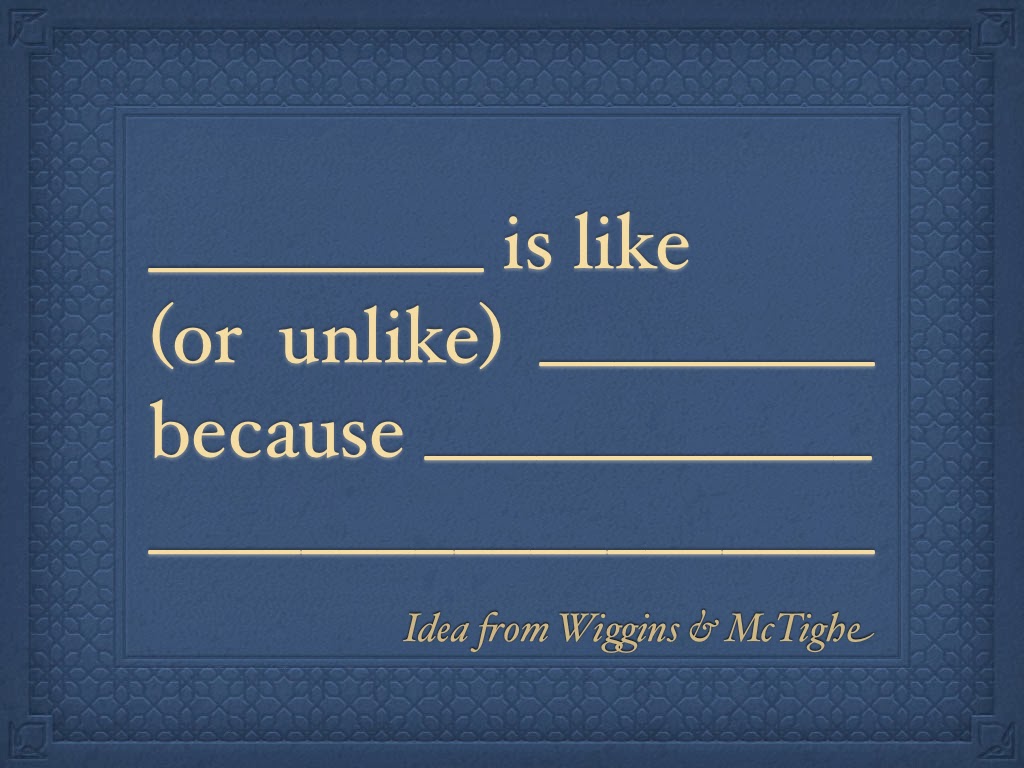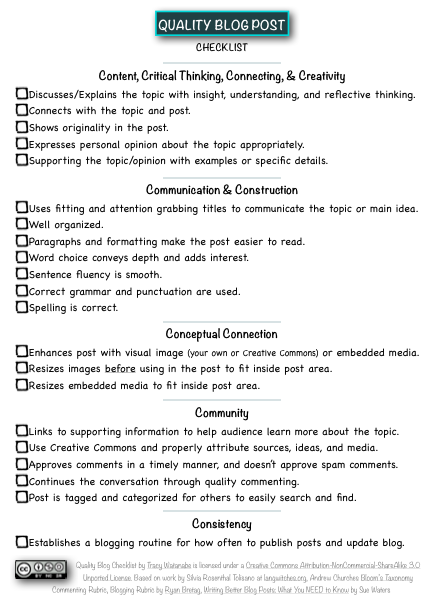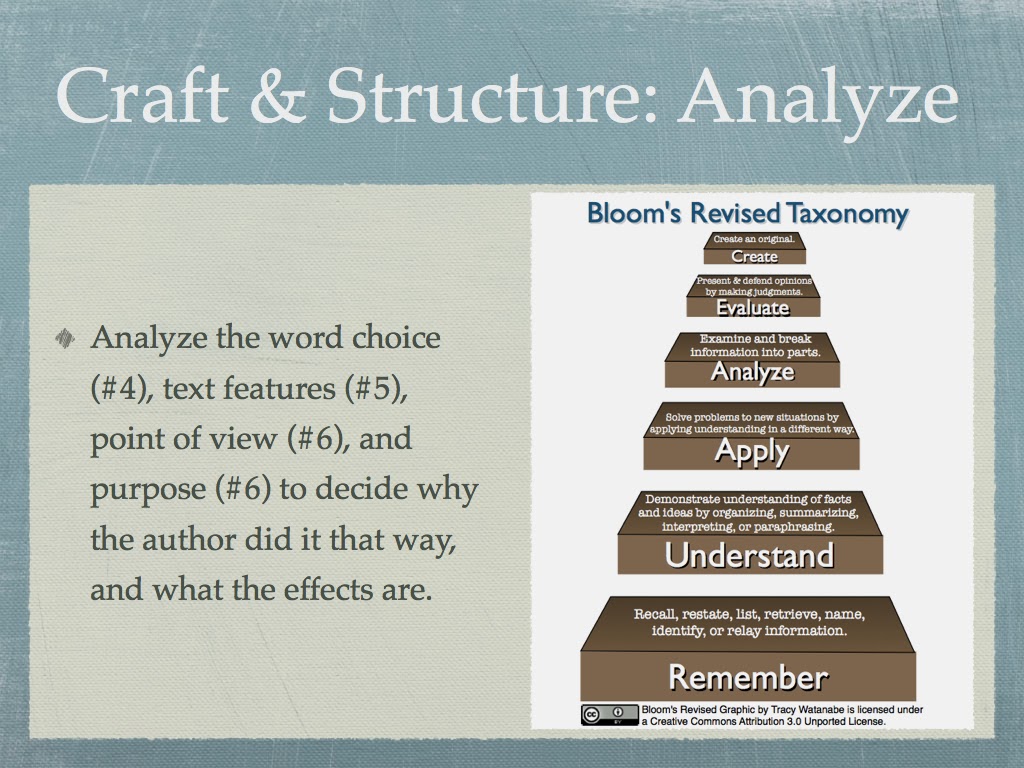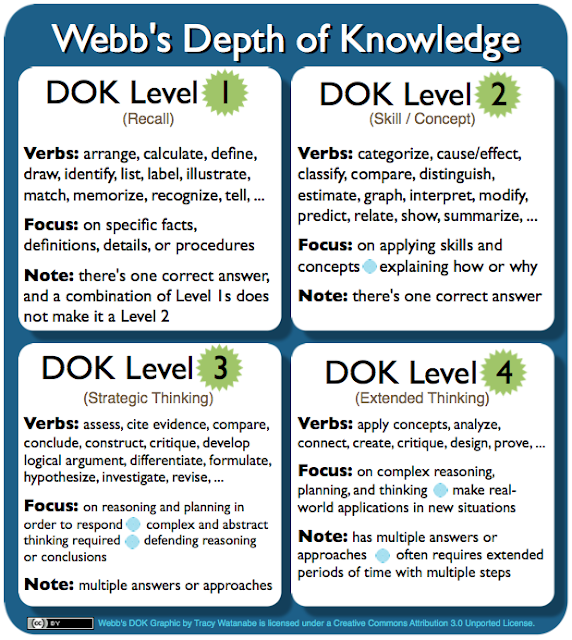Analogies, Visual Representations and Metaphors for DOK
This post will focus on analogies, visual representations, and metaphors as avenues for creating engaging DOK tasks.
Analogies
Analogy prompts are great ways to check for understanding (Wiggins & McTighe in UbD), and they are DOK 3 tasks.
This can be done with any content area. Here are a few examples:
- Finding the line of symmetry is like finding a matching shoe because both sides are now the same size and same shape.
- Spelling correctly is like washing your hands after using the facilities because your mom always reminds you to go back and wash and the computer always puts that red squiggly line under those misspelled words. You'd be better off just doing it the first time.
Visual Representations
Creating a visual representation shows the complexity of students' thinking (e.g., a flow chart, a concept map, or a visual metaphor) .
Have you ever thought about having students create a concept map from the Learning students wrote down on their KWL chart? To do so, they need to synthesize ideas, look for themes and connections, then visually organize those ideas into categories.
The image below shows a concept map created from a KWL during 1:1 Professional Development. Each group created their own concept map, and the beauty of it was: 1) it made the groups think about the big ideas we've discussed during PD; and 2) it was a formative assessment for me to see where each group was, so I knew if they were ready for the next step.
 | ||
| Artifact from 1:1 training with AJHS, Feb of 2012. |
Metaphors
Creating strong metaphors requires an understanding of the denotation and connotation of words, and how they conjure up emotions as they create visual connections (Common Core Craft and Structure Standard #4).
Have you ever thought about having students create metaphors with their vocabulary or spelling words? They'd have to clearly understand the meanings of the words, and how to craft them into connections to convey specific emotions or ideas.
Or, have you thought about having students create a video of metaphors (Common Core Speaking and Listening Standard #2)? Here's a lesson for that. Below is a product that my 2009 5th grade students created based on that idea. Confession: I wasn't aware of Creative Commons at the time.
Visual metaphors is that very process of taking complicated ideas and finding ways to visually represent those ideas (Common Core Speaking and Listening Standard #2).
- Several are listed in this post about digital storytelling, with a spotlight on Videolicious.
- Use iMovie, Movie Maker, or Splice for editing movies.
- Haiku Deck on the iPad or on the web is known for allowing you to easily create beautiful presentations, great for visual metaphors.
- And don't forget about infographics! This is a stationary visual metaphor--a graphic--to share data or an idea. Give Piktochart a go... or look at this list for other infographic creation tools.
Final thoughts
While some of these tasks take some time investment (e.g., creating visual metaphors), it doesn't have to. Simply asking student to draw a picture or a visual representation of their learning challenges them to synthesize ideas. Ask them to make an analogy, which is also a low prep task with high cognitive results. Then share their thoughts with a partner or a small group.
- What are some other low prep, high results (DOK 3) tasks students can engage in?
- How do you/would you use analogies, visual representations and metaphors in your classroom or professional development?
- How else does this post connect with you?




This is a great post, Tracy. I remember hearing you say at a training years ago that one way to instantly increase students' level of thinking was to ask them to compare whatever they were learning about to something else. It's such a simple idea but so important---when you ask them to create an analogy, metaphor or other comparison they need to exercise those critical thinking "muscles". With the younger grades we do a lot of Venn diagrams for this, but we use Google Drawing or the Venn Diagram app on the iPads to make them more interactive, collaborative and shareable. One other idea (which might have come from you too!) is to have them make an alphabet book, either digitally or on paper, where each letter of the alphabet represents something about what they are learning. We are doing one of these now about the Iditarod and I'm noticing that the kids have to dig a little deeper once they get beyond the easier letters like A is for Alaska! Thanks again for always sharing such common sense, usable ideas.
ReplyDeleteThanks Shauna! Alphabet books are fun and the kiddos enjoy their product... and don't realize how much effort they put into those and the amount of reflection that took place.
DeleteBack in the day where we had the computers score writing, I used to have them submit their 1st final draft -- then I'd have them add two figurative language sentences (typically similes and some metaphors) -- then we'd score them the second time. Kids were astonished when their scores would go up a full point for ideas/content, sentence fluency, voice, and word choice. When I'd ask them why, they'd deduce that they put in more detail; their sentence patterns were different with the figurative language; their voice would shine through; and the word choice was specifically thought about. -- They LOVED adding metaphors and similes to their writing (although trickier for expository)... and enjoyed when I'd have them make metaphors for their learning outside of "writing time" because they'd practice those critical thinking "muscles" (I liked your description:).
Kind regards,
Tracy